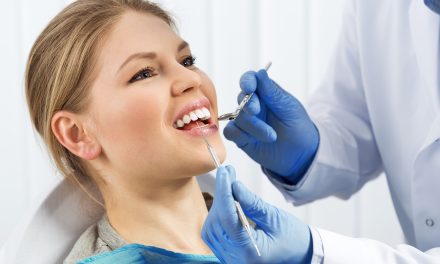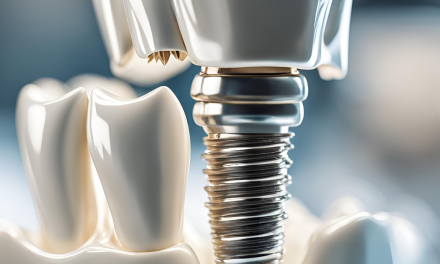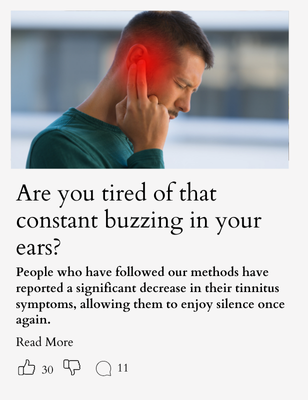Preparing for preschool dental activities requires a thoughtful approach. Dentists can create a fun and educational experience that helps young children feel comfortable with oral health care. By using engaging tools, storytelling, and hands-on activities, dentists can make dental visits positive and memorable for preschoolers.
Creating a welcoming environment is key. Bright colors, child-sized furniture, and plenty of toys can help put little ones at ease. Dentists can also use simple language and visual aids to explain dental concepts in ways kids can understand.
Involving parents and preschool staff in dental education efforts can reinforce good habits at home and school. This team approach helps ensure children receive consistent messages about the importance of oral health.
Key Takeaways
- Engaging tools and activities make dental visits fun for preschoolers
- A welcoming environment helps children feel at ease during appointments
- Involving parents and teachers reinforces good oral health habits
Understanding Preschoolers’ Dental Needs
Preschoolers have unique dental needs that require special attention. Their mouths are still developing, with baby teeth gradually being replaced by permanent teeth.
Proper dental care for preschoolers is crucial for their long-term oral health. Dentists should focus on preventive measures and education.
Key dental needs of preschoolers include:
- Regular check-ups (every 6 months)
- Gentle cleanings
- Fluoride treatments
- Sealants for cavity-prone teeth
- Guidance on proper brushing and flossing techniques
Preschoolers may experience dental anxiety. Dentists can use child-friendly approaches to make visits more comfortable and less intimidating.
Diet plays a significant role in preschoolers’ dental health. Limiting sugary snacks and drinks helps prevent cavities. Encouraging water consumption between meals supports oral hygiene.
Dentists should be aware of common issues in preschoolers:
- Tooth decay
- Thumb-sucking habits
- Early tooth loss
- Misalignment of teeth
Educating parents is crucial. They need to understand the importance of maintaining their child’s oral health at home. This includes supervising brushing and limiting sugary foods.
By understanding these needs, dentists can provide effective care and set preschoolers on a path to lifelong dental health.
Essential Tools for Preschool Dental Activities
Dental tools for preschoolers need to be safe, engaging, and effective. The right equipment helps dentists create fun and educational experiences for young patients.
Choosing Age-Appropriate Dental Tools
Pediatric dentists should select tools that fit small mouths and hands. Child-sized toothbrushes with soft bristles are key. Colorful, character-themed brushes can make brushing more fun.
Dentists can use oversized tooth models to show proper brushing techniques. These models help kids see and understand dental care better.
Flavored toothpaste samples in kid-friendly flavors like bubble gum or fruit can encourage brushing. Dentists should offer fluoride-free options for very young children who might swallow toothpaste.
Small, plastic hand mirrors let children see inside their own mouths. This can make dental exams less scary and more interactive.
Hygiene and Safety Protocols
Dentists must follow strict hygiene rules when working with preschoolers. All tools should be sterilized between patients. Single-use items are best when possible.
Disposable gloves and masks are must-haves. Dentists should change these between each child to prevent germs from spreading.
Child-safe disinfectants should be used on surfaces and toys in the waiting area. These should be non-toxic and quick-drying.
A handwashing station with step stools helps kids reach the sink. Colorful soap dispensers can make hand hygiene more appealing to young patients.
Dentists should have a first-aid kit ready for any minor accidents. This kit should include items suitable for treating young children.
Innovative Dental Activity Kits
Dental activity kits can make learning about oral health fun. These kits might include:
- Tooth-shaped stickers or temporary tattoos
- Coloring books with dental themes
- Play-doh for making tooth shapes
- Puppet sets with toothy smiles for role-playing
Dentists can create sorting games with plastic foods. Kids can separate items into “good for teeth” and “bad for teeth” categories.
Tooth-shaped timers can help kids brush for the right amount of time. Dentists can send these home as rewards for good behavior.
Some kits might have child-safe plaque disclosing tablets. These show kids where they need to brush better, turning oral care into a fun challenge.
Creating a Welcoming Dental Environment
A welcoming dental environment helps kids feel comfortable and reduces anxiety. The right office design and decor can make a big difference in how children experience their dental visits.
Designing a Child-Friendly Office
Child-friendly dental offices use open layouts and bright spaces to create a fun atmosphere. Low reception desks allow kids to see over them easily.
Kids’ sized furniture and fixtures make the space feel more inviting. Toys, books, and games in the waiting area keep children entertained.
Dental chairs with fun shapes or themes can excite young patients. Some offices use chairs that look like race cars or spaceships.
Ceiling-mounted TVs or tablets let kids watch shows during procedures. This provides a helpful distraction.
Using Soothing Colors and Decor
Soft, calming colors help reduce stress in dental offices. Light blues and greens create a peaceful mood. Warm yellows and oranges can also be cheerful without being too stimulating.
Wall murals with nature scenes or fun characters make the space more inviting. Hanging mobiles or bubble tubes provide visual interest.
Gentle lighting is key. Natural light from windows is ideal. For artificial light, use soft, warm bulbs instead of harsh fluorescents.
Comfortable seating in waiting areas helps kids and parents relax. Beanbag chairs or cushioned benches work well.
Developing Engaging Dental Education Materials
Creating fun and interactive dental education materials is key for teaching preschoolers about oral health. These resources help dentists connect with young patients and make learning enjoyable.
Interactive Storybooks and Games
Interactive storybooks and games are effective tools for teaching preschoolers about dental health. Dentists can use colorful picture books with simple stories about tooth care and visits to the dentist. These books help kids feel more comfortable with dental concepts.
Digital games on tablets or computers let children practice brushing techniques virtually. Kids can play as cartoon characters brushing away “sugar bugs” or flossing between teeth.
Puzzles and matching games teach kids to identify healthy foods for teeth. Dentists might create a game where children sort foods into “smile helpers” and “cavity causers” categories.
Visual Aids and Demonstrations
Visual aids make dental concepts easier for young children to grasp. Large tooth models allow dentists to demonstrate proper brushing techniques. Kids can practice on the models with oversized toothbrushes.
Posters showing foods that are good and bad for teeth help reinforce healthy eating habits. Dentists can create a magnetic board where kids move food items into “healthy” and “unhealthy” columns.
Short videos featuring cartoon characters learning about teeth can capture children’s attention. These videos might show proper brushing methods or explain what happens during a dental visit.
Reward Systems to Encourage Participation
Reward systems motivate preschoolers to practice good dental habits. Dentists can give out stickers or small prizes for cooperation during visits. This helps build positive associations with dental care.
Brushing calendars let kids track their daily tooth care at home. Children get to place a sticker on the calendar for each day they brush. After a full week, they earn a small reward.
Certificates praising good dental habits can boost kids’ confidence. Dentists might award “No Cavity Club” memberships to children who have cavity-free checkups. This encourages ongoing care between visits.
Incorporating Storytelling in Dental Care Lessons
Storytelling is a powerful tool for teaching preschoolers about dental care. It makes lessons more engaging and helps children remember important information. Stories can bring dental concepts to life in a fun and relatable way.
Creating Relatable Characters
Make characters that preschoolers can connect with. Use animals or children as main characters in your dental stories. Give them names and personalities kids will remember.
For example, create a brave little tooth named “Tommy” who fights off sugar bugs. Or introduce a friendly dentist character called “Dr. Smile” who teaches good brushing habits.
Include characters who face common dental fears. This helps kids feel less scared about dental visits. Show how characters overcome their worries through positive experiences at the dentist.
Crafting Educational Dental Stories
Build stories around key dental care messages. Focus on brushing, flossing, healthy eating, and regular dentist visits. Keep the plot simple and easy for young children to follow.
Use vivid descriptions to explain dental concepts. For instance, describe plaque as “sticky monster goo” that needs to be brushed away. Incorporate feedback from dentists to ensure stories are accurate and helpful.
Add interactive elements to your stories. Let kids act out brushing motions or make chomping sounds. This keeps them engaged and reinforces good habits. End each story with a clear lesson about dental health that’s easy for preschoolers to remember.
Implementing Hands-On Activities
Hands-on activities help preschoolers learn about dental health in a fun way. These activities give kids a chance to practice good habits and get comfortable with dental tools.
Role-Playing Scenarios
Role-playing helps kids feel at ease with dental visits. Set up a pretend dentist office with a chair and basic tools. Let kids take turns being the dentist and patient.
Use stuffed animals as patients for shy kids. Show proper brushing and flossing on toy teeth. Act out common procedures like cleanings or x-rays.
Talk about what happens during a real visit. Explain each step in simple terms. Let kids ask questions and voice any worries they have.
Practice Sessions on Dental Models
Dental models give kids a close-up view of teeth and gums. Use oversized models to show proper brushing and flossing techniques. Let kids practice on the models with real toothbrushes.
Hands-on experiences have a lasting impact on learning. Show how cavities form using clay or play-doh. Demonstrate how sealants protect teeth.
Use models to point out different types of teeth. Explain why each kind is important. Let kids count teeth and name their parts.
Building Trust and Easing Dental Anxiety
Dental visits can be scary for young children. Dentists can use simple tricks to help kids feel safe and calm. This makes dental care easier for everyone.
Communication Strategies for Dentists
Dentists should use simple words when talking to kids. They can explain each step of the exam or treatment. This helps children know what to expect.
Praise helps too. Dentists can say “Great job!” when kids open wide or sit still. This makes them feel proud and more willing to cooperate.
Asking kids questions about their day or favorite toys can distract them from fear. It also builds a friendly connection.
Comfort Techniques for Young Patients
The dental office can be made more kid-friendly. Colorful pictures on walls and fun toys in the waiting room help children feel at ease.
Letting kids sit in a parent’s lap during exams can provide comfort. Dentists can also give kids a stuffed animal to hold.
Showing kids the tools and letting them touch safe items can reduce fear of the unknown. Dentists might let children wear sunglasses to block the bright light.
Using kid-sized tools and flavored toothpaste can make the experience more pleasant. Offering small rewards like stickers after the visit ends on a positive note.
Engaging Parents and Caregivers
Getting families involved is key to good dental health for preschoolers. Teaching parents and caregivers helps kids form good habits early on. This sets the stage for a lifetime of healthy smiles.
Educational Workshops for Families
Dentists can set up fun workshops for parents and kids. These teach about tooth care in simple ways. Use props like big toothbrushes and tooth models. Show how to brush and floss the right way.
Play games that teach about healthy foods for teeth. Have a “sugar hunt” to spot hidden sugars in drinks and snacks. Give out goodie bags with toothbrushes and stickers.
Make a photo booth with tooth-themed props. Families can take fun pictures to remember what they learned. Hand out easy-to-read handouts with key points to take home.
Home Dental Care Tips and Practices
Give families clear steps for good tooth care at home. Make a colorful chart showing when to brush. Add pictures for morning and night.
Teach the “2×2” rule: brush for two minutes, twice a day. Show how to use timers or fun apps to keep track. Explain how to pick the right toothbrush size for small hands.
Talk about flossing for kids. Suggest floss holders to make it easier. Give tips on healthy snacks that are good for teeth. List foods to eat less often, like sticky candy.
Encourage parents to make brushing fun. Suggest playing music or telling stories while brushing. Praise kids for their efforts to build good habits.
Involving Preschool Staff in Dental Health Education
Preschool staff play a key role in promoting dental health to young children. Their involvement can greatly enhance the effectiveness of oral health programs.
Training Sessions for Teachers
Dentists can organize training sessions for preschool teachers. These sessions aim to boost teachers’ knowledge about dental health. Topics may include proper brushing techniques, healthy eating habits, and signs of tooth decay.
Hands-on activities help teachers learn how to demonstrate tooth care to kids. Role-playing exercises can prepare staff to handle common dental issues in the classroom.
It’s helpful to provide follow-up support after training. This ensures teachers feel confident applying what they’ve learned.
Resource Materials for Classroom Use
Dentists can create or supply kid-friendly dental health materials for classroom use. These might include:
- Colorful posters showing correct brushing methods
- Interactive games about healthy foods for teeth
- Storybooks featuring characters who practice good oral hygiene
Teachers can use these resources to incorporate dental health into daily lessons. Take-home materials like brushing charts or parent info sheets help extend learning beyond the classroom.
Regular updates to these resources keep the content fresh and engaging for both staff and students.
Evaluating the Effectiveness of Dental Activities
Measuring the impact of dental activities for preschoolers is key. Good evaluation helps dentists improve their programs and reach more kids.
Feedback Mechanisms
Dentists can use simple feedback forms for parents and teachers. These forms ask about the kids’ reactions to activities. Did they enjoy them? Did they learn new things?
Short quizzes for the children work well too. They can be picture-based for young kids. This tests what they remember about tooth care.
Observation during activities is also useful. Dentists can watch how kids respond. Do they pay attention? Can they follow along with tooth brushing practice?
Assessment Tools and Metrics
Tracking cavity rates in patients over time is a solid metric. Dentists can check if education programs lead to fewer cavities.
Surveys can measure changes in habits. Questions might include:
- How often do kids brush?
- Do they use fluoride toothpaste?
- Are sugary snacks less common?
Dentists can also track how many kids come for check-ups after school visits. This shows if the activities inspire action.
Comparing results to set goals helps gauge success. Dentists should make clear targets for each program. Then they can see if the activities meet these goals.
Conclusion and Next Steps
Dentists can now feel ready to take on preschool activities. With the right planning and tools, these visits can be fun and educational for young kids.
The next step is to put these ideas into action. Dentists should start by picking one or two activities to try at their next preschool visit.
It’s a good idea to get feedback from parents and kids after each activity. This will help dentists improve their approach over time.
Dentists may want to team up with local preschools. They can offer to do dental health lessons or host field trips to the dental office.
Staying up to date on new research about kids’ dental health is key. This will help dentists give the best care and advice to young patients and their families.
Remember, the goal is to make dental visits positive for preschoolers. With practice and patience, dentists can help kids develop good oral health habits that last a lifetime.
Frequently Asked Questions
Engaging preschoolers in dental health activities helps build good habits early. Fun and interactive approaches make dental visits and daily oral care more appealing to young children.
What activities can help preschoolers understand the importance of dental hygiene?
Dentists can use tooth-friendly games and puzzles to teach preschoolers about dental hygiene. Coloring sheets with smiling teeth and toothbrushes are popular choices.
Hands-on activities like brushing oversized toy teeth help children practice proper techniques. Storytelling about cavity-fighting superheroes can also capture their attention.
How can dentists make dental visits more engaging for preschool children?
Dentists can create a welcoming environment with colorful decor and child-sized furniture. They might offer rewards for good behavior during check-ups.
Using child-friendly language to explain procedures helps reduce anxiety. Letting children explore safe dental tools can make visits feel like an adventure.
What are some effective dental health lesson plans for preschool?
Lesson plans can include “cavity detective” activities where children spot unhealthy foods. Teaching proper brushing through songs and rhymes is effective for this age group.
Creating a “tooth-friendly foods” collage helps children understand nutrition’s role in oral health. Role-playing dental visits can familiarize kids with the process.
Which printable dental activities are suitable for toddlers to promote oral health?
Simple connect-the-dots of dental items work well for toddlers. Matching games with healthy and unhealthy foods for teeth are engaging and educational.
Tooth brushing charts with stickers can encourage daily habits. Coloring pages featuring cartoon teeth characters appeal to this age group.
How can you incorporate fun into routine teeth brushing for young children?
Parents can use timers shaped like teeth to make brushing feel like a game. Playing favorite songs during brush time can make it more enjoyable.
Letting children choose their toothbrush color or character gives them a sense of ownership. Praising good brushing habits with small rewards can reinforce positive behavior.
What strategies can teachers use to teach dental hygiene to preschoolers effectively?
Teachers can invite dental professionals for classroom demonstrations. They might use puppets to act out proper brushing and flossing techniques.
Creating a tooth-friendly snack station in the classroom reinforces healthy eating habits. Reading books about dental health can spark discussions on oral care.
Conclusion
Preparing for preschool dental activities takes planning and care. Dentists can make a big impact on young kids’ oral health. With the right approach, these visits can be fun and educational.
Dentists should create a welcoming space for little ones. Bright colors, fun pictures, and kid-sized tools help put children at ease. Having toys or books in the waiting room is a good idea too.
Simple language works best when talking to preschoolers about teeth. Short, clear instructions help kids follow along. Praise goes a long way in making the experience positive.
Hands-on activities keep young children engaged. Letting kids practice brushing on toy teeth or play dental games can make learning fun.
Dentists should work with parents too. Giving take-home tips helps continue good habits. Regular check-ups from an early age set kids up for lifelong oral health.
With some prep work, dentists can make a real difference. Positive early experiences at the dentist office lead to healthier smiles down the road.
















